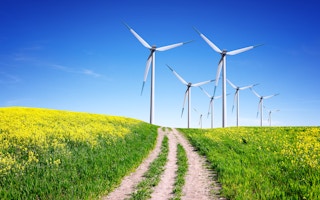The decline in investment in renewable energy accelerated in 2013 as the cost of solar panels and wind farms fell, unsettling investor confidence in alternatives to fossil fuels.
The value of deals to finance clean energy and efficiency projects fell 12 per cent to $254 billion last year, according to data compiled by Bloomberg. That’s quicker than the 9.1 per cent drop in 2012 from record level of $318 billion the year before.
The findings released at a United Nations meeting in New York mark a setback for efforts to boost funding for cleaner forms of energy. Annual investment in renewables must double to $500 billion by the end of this decade and then again to $1 trillion by 2030 to limit global warming, according to Ceres, a Boston-based group advising investors on sustainability issues.
“There’s a huge clean energy investment gap,” Jack Ehnes, chief executive officer of the California State Teachers’ Retirement System, the second largest US public pension fund, said in a Ceres statement. “Meeting the $1 trillion a year goal will be a challenge, but it is where we need to be in order to protect and grow our portfolios and to ensure the long-term sustainability of our planet.”
The UN event gathering 500 policy makers and financial executives is aimed at urging investors to step up their support for renewable energy. Ceres along with fund managers and government officials are seeking to convince investors that renewable energy will offer long-term returns that are good for the bottom line as well as the environment.
UN Limit
The ambition endorsed by ministers from more than 190 nations is to limit global warming to 2 degrees Celsius by the end of the century. Temperatures already have increased about 0.8 of a degree since the industrial revolution and are on track for the biggest change since the last ice age ended more than 10,000 years ago.
“We’re still not seeing clean energy deployment at the scale we need to put a dent in climate change,” Ceres President Mindy Lubber said in the statement.
“
European investors provided $57.8 billion for renewables last year, down from $97.8 billion in 2012. China decreased 3.8 per cent to $61.3 billion, its first decline in more than a decade, and the US fell 8.4 per cent to $48.4 billion. Japan, which is promoting wider use of solar power as it shuts down its nuclear reactors, surged 55 per cent to $35.4 billion.
Ceres proposed that investors allocate five per cent of their portfolio to clean-energy and pay more attention to the potential risk that fossil-fuel companies’ reserves may become stranded assets amid a transition to a low-carbon economy.
“The answer to this problem will be business,” Tom Steyer, founder of the San Francisco-based investment adviser Farallon Capital Management LLC, said today at the UN. “Finance and business are not about wishful thinking.”
Falling Costs
The decline in investment last year was due in part to technological advances that are driving down costs and making clean power more affordable, said Michael Liebreich, chairman of the advisory board for Bloomberg New Energy Finance, which compiled the annual investment data.
European investors provided $57.8 billion for renewables last year, down from $97.8 billion in 2012. China decreased 3.8 per cent to $61.3 billion, its first decline in more than a decade, and the US fell 8.4 per cent to $48.4 billion. Japan, which is promoting wider use of solar power as it shuts down its nuclear reactors, surged 55 per cent to $35.4 billion.
“The top-line figures don’t tell the whole story,” Liebreich said in the statement. “Investment in Europe crashed, in large part due to the falling cost of solar installations.”
The lower figures also are the result of investments within large companies, making the global totals appear lower, said Wal van Lierop, president and CEO of the Vancouver-based clean energy investment company Chrysalix Energy Venture Capital.
“The adoption by large corporations is making more cleantech more invisible,” van Lierop said. “It’s harder to measure.”

















